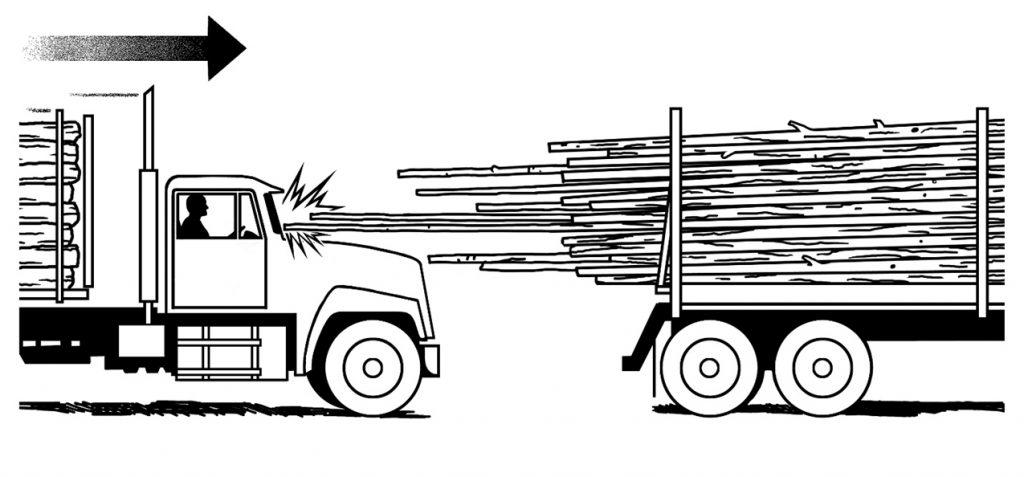
BACKGROUND: Two truck drivers, each driving a loaded log truck with pulpwood that had a large amount of overhang, traveled together during the daytime to deliver their loads to the same mill located in the South. The weather was overcast, but visibility was good. It appears that the weather did not contribute to this incident.
PERSONAL CHARACTERISTICS: The first driver was family to the second driver. The second driver had 15-plus years of experience and the first driver had 5-plus years of experience driving a log truck.As they traveled, they kept in contact with each other by CB radio. The first driver would relay traffic information to the driver behind so they could avoid trouble/issues.
UNSAFE ACTS & CONDITIONS: They had traveled on a four-lane highway, and as they approached the mill, the lanes transitioned to a two-lane road with a lower speed limit. The first driver reported that as he slowed, he felt a sudden jolt to his truck followed by a loud crashing noise.
ACCIDENT: He exited the cab quickly and went to the rear of the truck. He saw that the second truck had hit his truck.
INJURY: The second driver was dead, struck by logs that entered the cab. The first driver did not know why his family member failed to slow as he warned him of the speed limit change.
RECOMMENDATIONS FOR CORRECTION:
• Manage spacing by keeping safe following distances. One rule of thumb recommends a following distance of one second for each 10 feet of vehicle length at speeds below 40 MPH and an additional second at greater speeds.
• Eliminate distractions—they remove precious seconds needed to react.
• Reduce speed when entering construction zones or towns.
• Attach end-of-load warning flags or flashing strobe lights as required by state or federal law. (Note: Loads must not extend beyond the maximum overhang allowed by state or federal law.)
• Make daily pre-shift inspections to ensure brakes, lights, etc. are in working order.
Courtesy of the Forest Resources Association: https://forestresources.org/
